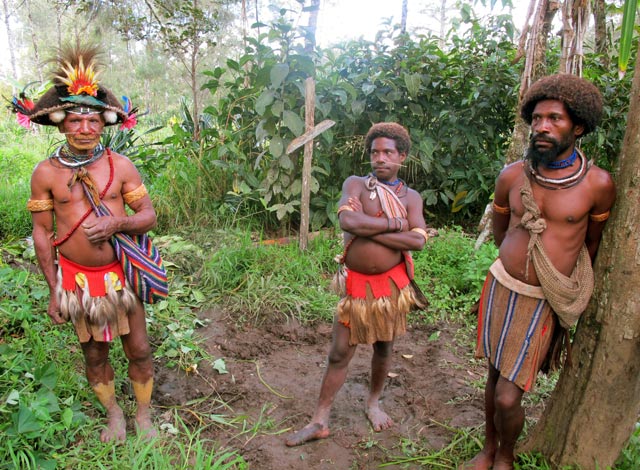Papua New Guinea, where colour and clans thrive
By Christiane Oelrich
A jungle girl deforests a huge lakeside with her stubbornness. A clan frightens greedy neighbours with terrible masks. The power of magic is not to be underestimated in Papua New Guinea.

Young men spend up to three years in wig school, where they let their hair grow before selling it to be used in wigs.
A vessel to enact revenge, convey fear, defend honour and express envy, rituals are not an act put on for tourists visiting PNG, but an everyday part of life in some areas of the country.
With rudimentary infrastructure, it takes several days on foot to reach the far corners of the archipelago. Yet it is this disconnect from modernity that has allowed traditional culture to survive in all its forms today.
This is never more evident than in the Yimas region, which can only be explored by boat. Located in the basin of the Sepik River, which at 1,126 kilometres long is often called the Amazon of PNG, the waterways of the Yimas are busy with boat traffic as people ferry to trade and socialise. Women can be seen in heartwood canoes, often with a fire on board. “To warm themselves, to grill or to light cigarettes,” local travel guide John said.
Men can often be heard hacking to the core of sago palms for hours to reach sago powder – the core element of their diet – which women will then pound with river water. The juice is used as starch to make pancakes or other puddings. With few other options available, Papuan cuisine is centred on sweet potatoes, greens and fish.
Like other tribesmen, fishermen often have scar patterns from initiation rites, where the skin is carved and the excretion of blood symbolises the cutting of the umbilical cord
“Then oil and clay are put on it and the young man lays over a smoky fire so that the wounds get infected and bulging scars emerge,” said Australian anthropologist Nancy Sullivan, who lives in PNG.
While some 800 languages are spoken in PNG, Tok Pisin is used throughout the country. An English-based creole, it is one of the country’s three official languages and can be traced back to colonial plantations.
Clans in the highlands of peaks rising 4,000 metres had their first exposure to the outside world in the 1930s, when the Australian Leahy brothers arrived looking for gold. “Like in the stone age,” was how the explorers described the locals, who at first regarded the white men as ancestor spirits.
Clan culture is central to life in PNG. “People are like sugarcane,” said Michael, a travel guide, describing how clan members share earnings with their less fortunate brethren. “One alone will be blown over by the wind. There always has to be many standing together.”
While life in the country can be difficult, it can also be extremely colourful, especially amongst the Huli. During times of festivity the highland tribe paint their faces bright yellow and don elaborate wigs. For three male students at a local wig school, their hair is a source of great pride, and income. In the months leading up to a celebration, they take great care fussing over their frizzy locks, treating their hair according to sacred ritual guidelines, before cutting it off and selling it to wig producers.
However, it is not all fun and games on the archipelago. The Waghi Valley is home to the mud men warriors, who dance in cat-like soft moves to surprise their enemy. As legend has it, the mud men were defeated in battle and chased off their land. To avenge their honour, the warriors cloaked themselves in grey mud, wore huge grotesque masks made from clay and attacked their victors. Their payback raids were renowned for their brutality. While some villages re-enact these scenes for tourists today, the ‘show’ is still very much a reality in many parts of the country, where witch and clan wars still cost dozens of lives every year in the highlands.

